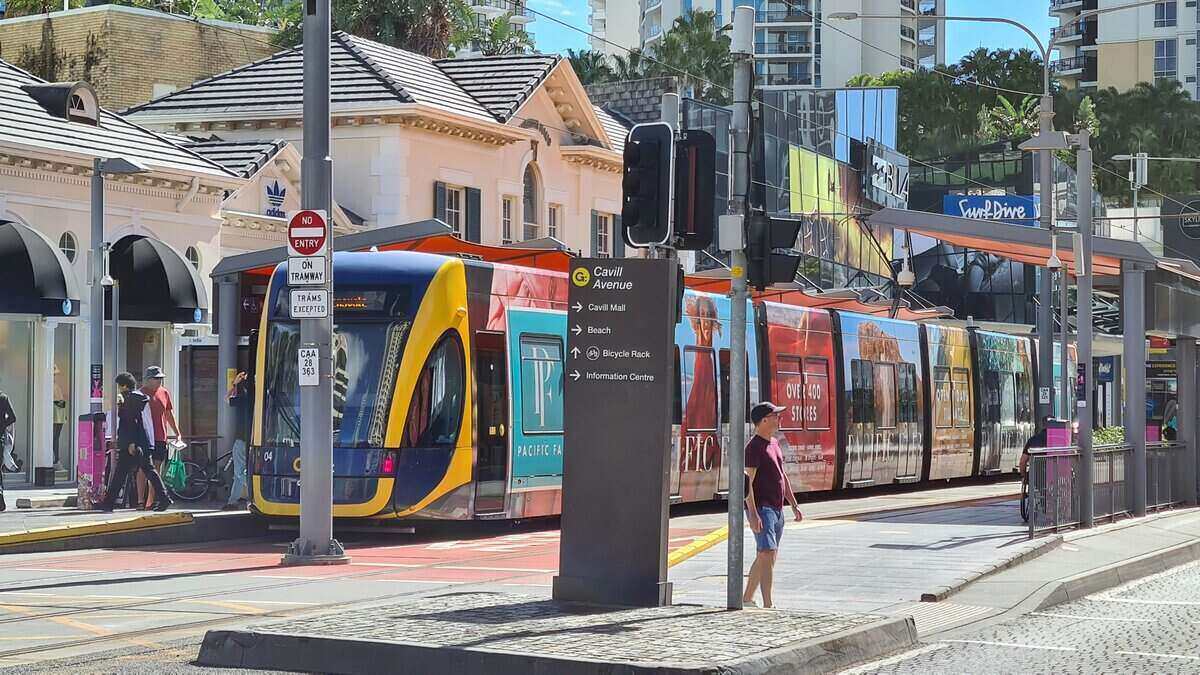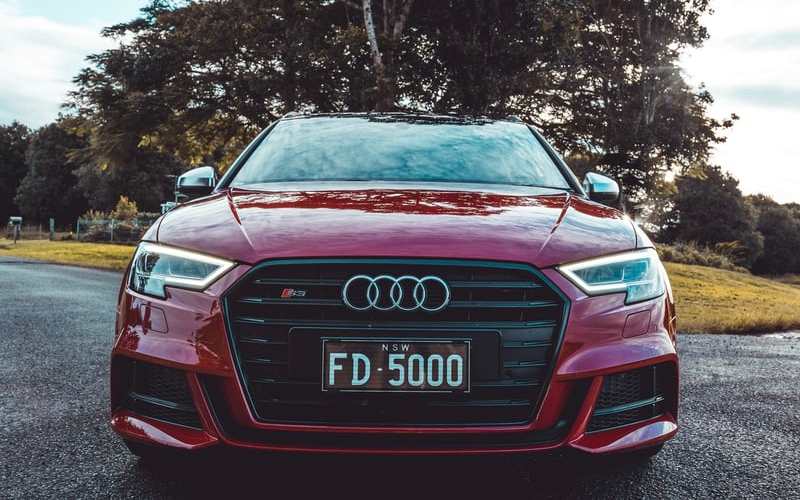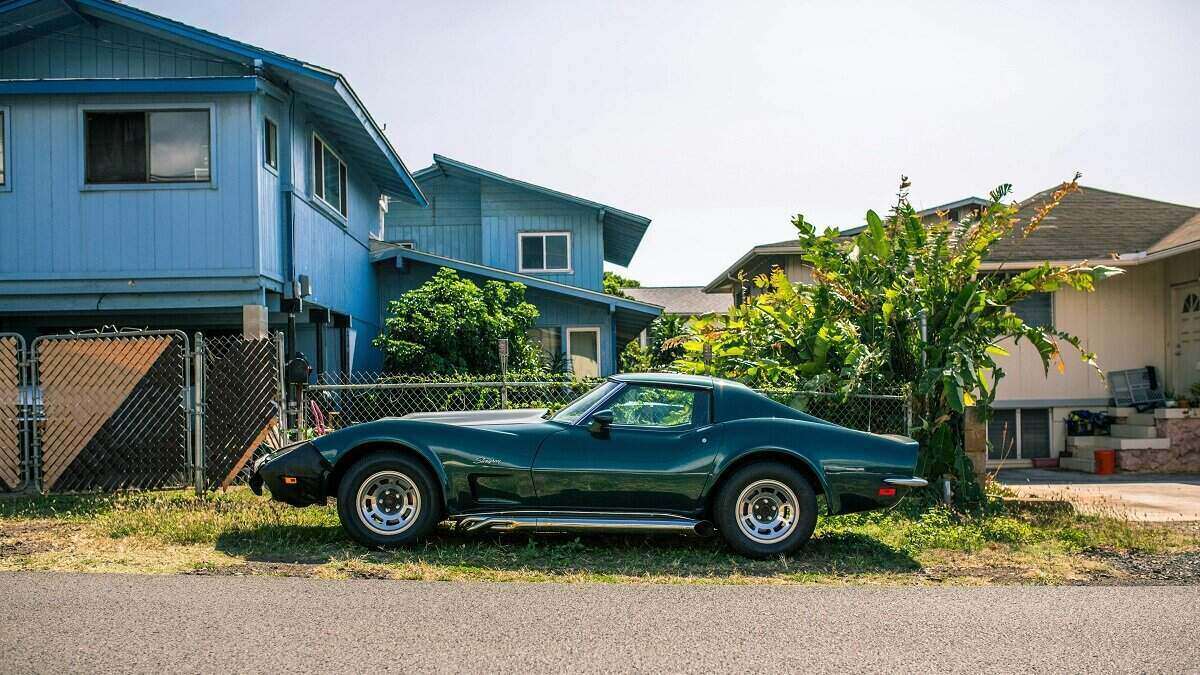The moment a new car rolls off the dealership floor, its value has probably dropped up to 15 per cent, before dropping a further 15 per cent value by the end of year one.
While cars are not considered a wise investment, they are a necessity here in Australia - which means we’re all making bad investments.
However, with some research under your belt, there are opportunities to minimise the impact of depreciation on your back pocket.
In the market for a new car? The table below features car loans with some of the lowest fixed and variable interest rates on the market.
| Lender | Car Loan | Interest Rate | Comparison Rate* | Monthly Repayment | Interest Type | Vehicle Type | Maximum Vehicle Age | Ongoing Fee | Upfront Fee | Total Repayment | Early Repayment | Instant Approval | Online Application | Tags | Row Tags | Features | Link | Compare | Promoted Product | Disclosure |
|---|---|---|---|---|---|---|---|---|---|---|---|---|---|---|---|---|---|---|---|---|
5.99% p.a. | 7.12% p.a. | $580 | Variable | New | No Max | $8 | $400 | $34,791 |
| Promoted | Disclosure | |||||||||
6.52% p.a. | 6.95% p.a. | $587 | Fixed | New, Used | No Max | $0 | $350 | $35,236 |
| Promoted | Disclosure | |||||||||
6.57% p.a. | 7.19% p.a. | $588 | Fixed | New | No Max | $0 | $250 | $35,278 |
| Promoted | Disclosure |
How to calculate car depreciation
To calculate car vehicle depreciation, we first take the sticker price of that vehicle when it was brand new and subtract its current market value.
New Car Price - Current Value = Price Difference
Divide the difference by the New Car Price and Multiply by 100 = Depreciation Percentage
-
Example: $30,000 (new car price) - $22,000 (current value) = $8,000
-
$8,000 / $30,000 x 100 = 26.6% deprecation
-
Depreciation Rate Formula: New Car Price - Current Value, Divide Difference by New Car Price, Multiply by 100.
It’s best to use data from a reputable valuation platform like Redbook, and stick to identical model variants to get a clear idea of depreciation, specific to that individual model.
Top 10 selling vehicles and their depreciation rates
To help put everything in context and use the all-important formula above, let’s take a look at depreciation rates across ten of Australia’s best-selling vehicles so far in 2024.
With the help of the latest VFacts report from the Federal Chamber of Automotive Industries (FCAI), we’ve listed out the top ten highest volume sellers so far in Australia, and we’ll be breaking down their depreciation rates to see which models best weather the storm.
|
Make & Model |
Vehicles Sold YTD June, 2024 |
|---|---|
|
Ford Ranger |
33,531 |
|
Toyota HiLux |
28,515 |
|
Toyota RAV4 |
25,405 |
|
Isuzu D-MAX |
15,820 |
|
Mitsubishi Outlander |
14,443 |
|
Toyota Corolla |
13,179 |
|
Tesla Model Y |
12,516 |
|
Mazda CX-5 |
11,920 |
|
MG ZS |
11,809 |
|
Ford Everest |
11,276 |
For reference, we’re going to look at depreciation after a three-year ownership period, which tends to be the most significant for a vehicle.
Typically, the depreciation curve tends to flatten out a little bit at the three-to-five-year mark, with another notable drop when the factory warranty expires.
We will also be using an average of Redbook’s resale value estimates and have listed the most popular model variants which, down the line, often prove to be the most desirable.
Ford Ranger Depreciation
Ford’s Ranger lineup is tough-as-bricks as it remains Australia’s best-selling vehicle so far in 2024.
-
Ranger Wildtrak 4x4 2.0: Price New - $66,090. Price Now - $44,475
Deprecation Rate = 32.70% -
Ranger XLT Double Cab 4x4 2.0: Price New - $61,190. Price Now - $38,125
Depreciation Rate = 37.69%
Toyota HiLux Depreciation
The almighty HiLux is a go-to option for working Aussies, consistently topping sales charts.
-
HiLux SR5 Double Cab 4x4 Auto: Price New - $59,180 Price Now - $51,500
Deprecation Rate = 12.97% -
HiLux Workmate Double Cab 4x4: Price New - $49,425. Price Now - $42,150
Depreciation Rate = 14.71%
Toyota RAV4 Depreciation
Toyota’s midsize SUV has become a go-to option for families, particularly in hybrid form.
-
RAV4 Cruiser Hybrid 2WD: Price New - $43,415. Price Now - $36,250
Depreciation Rate = 16.50% -
RAV4 GX 2WD Auto: Price New - $34,300. Price Now - $29,750 Depreciation Rate = 13.26%
Isuzu D-MAX Depreciation
The D-MAX is famed for its work-ready platform, matched by immense off-road abilities.
-
D-Max T-Terrain 4x4 Auto: Price New - $63,990. Price Now - $46,625
Depreciation Rate = 27.13% -
D-Max SX High Ride Auto 4x2: Price New $39,900. Price Now - $26,800
Depreciation Rate = 32.83%
Mitsubishi Outlander Depreciation
The Outlander sits as one of the few midsize SUVs with a seven-seat cabin, and fuel-efficient plug-in hybrid (PHEV) engine option.
-
Outlander PHEV Exceed: Price New - $56,490. Price Now - $37,475 Depreciation Rate = 33.66%
-
Outlander ES 2WD Auto: Price New - $33,490. Price Now - $22,300 Depreciation Rate = 33.41%
Toyota Corolla Depreciation
The Corolla is a small car that packs a mighty big punch on versality, a long-time favourite for Aussies.
-
Corolla Ascent Sport Hybrid Hatch: Price New - $27,390 Price Now - $24,800 Depreciation Rate = 9.45%
-
Corolla Ascent Sport Petrol Hatch: Price New - $25,395. Price Now - $21,950 Depreciation Rate = 13.56%
Tesla Model Y Depreciation
Tesla’s battery-electric midsize SUV is spearheading EV adoption in the family segment.
-
Tesla Model Y (MY22) RWD Standard Range: Price New - $72,300. Price Now - $44,850
Depreciation Rate = 37.96% -
Tesla Model Y (MY22) Performance: Price New - $98,415. Price Now - $66,250 Depreciation Rate = 32.68%
Mazda CX-5 Depreciation
Mazda’s midsize SUV hero looks great, drives smooth and offers a tonne of variety within the jam-packed range.
-
CX-5 Maxx Sport FWD Auto: Price New - $36,690. Price Now - $24,475
Depreciation Rate = 33.29% -
CX-5 GT AWD: Price New - $47,190. Price Now - $28,550
Depreciation Rate = 39.49%
MG ZS Depreciation
The MG ZS has taken the small SUV segment by storm with its outstanding value proposition.
-
ZS Essence 2WD: Price New - $25,990. Price Now - $13,775 Depreciation Rate = 46.99%
-
ZS Excite 2WD: Price New - $22,490. Price Now - $13,550 Depreciation Rate = 39.75%
Ford Everest Depreciation
The Ford Everest remains an all-rounder Aussies have come to love for school runs and outback adventures alike.
-
Everest Trend 2.0 4WD: Price New - $62,390. Price Now - $39,375
Depreciation Rate = 36.88% - Everest Sport 4WD: Price New - $62,890. Price Now - $41,275 Depreciation Rate = 34.36%
Car makes with the lowest depreciation rate
With our small dataset, we can see that the following models have experienced the lowest rates of depreciation over the past three years.
This is namely due to limited availability for popular vehicles that caused wait lists to explode and, as a result, solidified prices on the second hand market.
-
Toyota Corolla Ascent Sport Hybrid - 9.45%
-
Toyota Corolla Ascent Sport Petrol - 13.56%
-
Toyota HiLux SR5 - 12.97%
-
Toyota RAV4 GX FWD - 13.26%
-
Toyota HiLux Workmate Double Cab 4x4 - 14.71%
Car makes with the highest depreciation rates
On the flip side of the equation, below you can find five car models that have depreciated the most over the past three years, largely caused by new-generation replacements arriving and questions on perceived reliability.
-
ZS Essence 2WD - 46.99%
-
Mazda CX-5 GT AWD - 39.49%
-
ZS Excite 2WD - 39.75%
-
Tesla Model Y Standard Range - 37.96%
-
Ranger XLT Double Cab 4x4 2.0 - 37.69%
Luxury car depreciation
Using data from the FCAI, we can see that the list of best-selling luxury car brands is topped by Tesla, followed by BMW, Mercedes-Benz, Audi, Lexus and Volvo.
Below you can find depreciation rates for each of those brand’s two best-selling vehicles to compare with more affordable members of the vehicle segment.
Tesla Depreciation
-
Tesla Model 3 Performance AWD: Price New - $98,801. Price Now - $48,550
Depreciation Rate = 50.86% -
Tesla Model 3 Long Range AWD: Price New - $73,400. Price Now - $39,990
Depreciation Rate = 45.51%
BMW Depreciation
-
BMW X5 xDrive40i M Sport: Price New - $124,900. Price Now - $77,450 Depreciation Rate = 37.99%
-
BMW 5 Series M550i xDrive Pure: Price New - $139,900. Price Now - $70,950
Depreciation Rate = 49.28%
Mercedes-Benz Depreciation
-
Mercedes-Benz GLC 63AMG S: Price New - $175,677. Price Now - $97,950
Depreciation Rate = 44.24% -
Mercedes-Benz GLE53 AMG Coupe: Price New - $171,800. Price Now - $93,150
Depreciation Rate = 45.77%
Audi Depreciation
-
Audi Q5 50 TDI S Line: Price New - $91,00. Price Now - $51,850
Depreciation Rate = 43.02% -
Audi Q7 50 TDI S Line: Price New - $123,900. Price Now - $71,550
Depreciation Rate = 42.25%
Lexus Depreciation
-
Lexus NX 450h F-Sport: Price New - $89,900. Price Now - $64,150 Depreciation Rate = 28.64%
-
Lexus LX600 Ultra: Price New - $210,800. Price Now - $141,500 Depreciation Rate = 32.87%
Volvo
-
Volvo XC60 Recharge AWD: Price New - $97,990. Price Now - $51,600 Depreciation Rate = 47.34%
-
Volvo XC90 Recharge AWD: Price New - $118,990. Price Now - $64,350
Depreciation Rate = 45.92%
Why do premium vehicles depreciate so fast?
It’s a combination of their high initial purchase price and the fact that buyers are wary of inheriting extortionately-priced fixes when things go wrong - especially out of warranty.
Yes, it’s possible that your current vehicle will become a cult-classic one day and the value will skyrocket, but this takes both time and a bit of a knack for predicting a soon-to-be-classic.
Maximising Vehicle Resale Value
You can’t fight the tide of depreciation, but there are a number of things you can try to leverage for the best possible price when selling your vehicle on the second hand market.
In the end, what someone is willing to pay is technically what it’s worth, but there are a few things to keep in mind to be best-prepared when it comes time to sell online or to a dealer.
Trim Level
Within any model range, there will be a handful of model variants, otherwise known as trim levels. Depending on your budget, stepping into a trim higher than the base model can be a great option to curb depreciation rates, which often impact entry-level vehicles the hardest. Ironically, it’s often best to avoid the range-topping variants which often have large depreciation rates from their high, initial purchase price.
Fuel Efficiency
Not only are fuel-efficient vehicles more affordable to own, they’re becoming even more appealing to buyers on the second hand market. With rising fuel costs and tightening belts, a fuel-efficient vehicle, be it a small-capacity petrol engine, a conventional hybrid or plug-in hybrid vehicle (PHEV) is becoming one of the best bets to curb the impact of depreciation.
Warranty Coverage
A warranty gives you the confidence of knowing a major fault from the vehicle’s assembly will be covered by the manufacturer if anything were to go wrong. Vehicles are much more valuable when sold with some existing warranty coverage, especially premium vehicles.
Body Shapes
The shape of vehicle you buy, whether it’s an SUV, hatchback or a sedan can have a sizable impact on its resale down the line. For quite some time now, SUVs have dominated sales charts, meaning they’re highly desirable among buyers, while sedans have seen their sales drop in recent years due to dropping consumer demand.
Mileage
Mileage is a big one when it comes to depreciation rates, and it’s arguably the single biggest determining factor of resale value, because it's a clear indication of just how used that vehicle is. Country-kilometres are king, with stretches on open roads and highways taking the least toll on a vehicle. Redbook lists its ‘average odometer’ readings for models alongside indicated prices which gives a pretty clear picture of where your car’s value sits on the scale.
Condition
The visual condition of a vehicle is a pretty accurate signifier of just how well it’s been treated, which has a huge impact on its value on the second-hand market. Tell-tale signs like faded paint or a cracked dashboard from UV exposure make vehicles that have been properly garaged for their lifespan even more desirable when it comes time to sell.
Logbooks
One of the easiest and most effective ways to confidently check on a vehicle’s reliability should be sitting in the glovebox - the logbooks. A full service history with a licenced mechanic or dealership is worth its weight in gold down the line, with more receipts the merrier.
Colour
While it seems a bit unusual, the colour of the vehicle does indeed have an impact on the rate of depreciation you might experience. According to a study from the U.S. Chase Bank, white and black are the best colour options for maximum resale value, followed by grey and silver, while yellow, orange, red and brown are reportedly the worst.
Modifications
Owners that give into the temptation of modifying their vehicle may experience more aggressive levels of depreciation when it comes time to tell, with the second-hand market far preferring stock vehicles due to reliability concerns.
Savings.com.au’s Two Cents
While there’s a lot of moving parts when it comes to vehicle depreciation, it’s unavoidable and shouldn’t necessarily get in the way of purchasing a vehicle that you love.
After all, you can’t be too disappointed if you know from the outset that you’re purchasing a depreciating asset.
For the more logical buyers with a shorter time frame that involves selling in a few years, current market trends are indicating that fuel-efficient vehicles and SUVs are the most in-demand segments of the market, likely to experience slightly less aggressive rates of depreciation.
Your safest hedge against depreciation will always come down to a handful of automotive fundamentals: take care of the vehicle, keep up with the service intervals and maybe think twice about a bright pink paint finish.
Photo by Erik Mclean on Unsplash







 Denise Raward
Denise Raward
 Harry O'Sullivan
Harry O'Sullivan


 Alexi Falson
Alexi Falson

